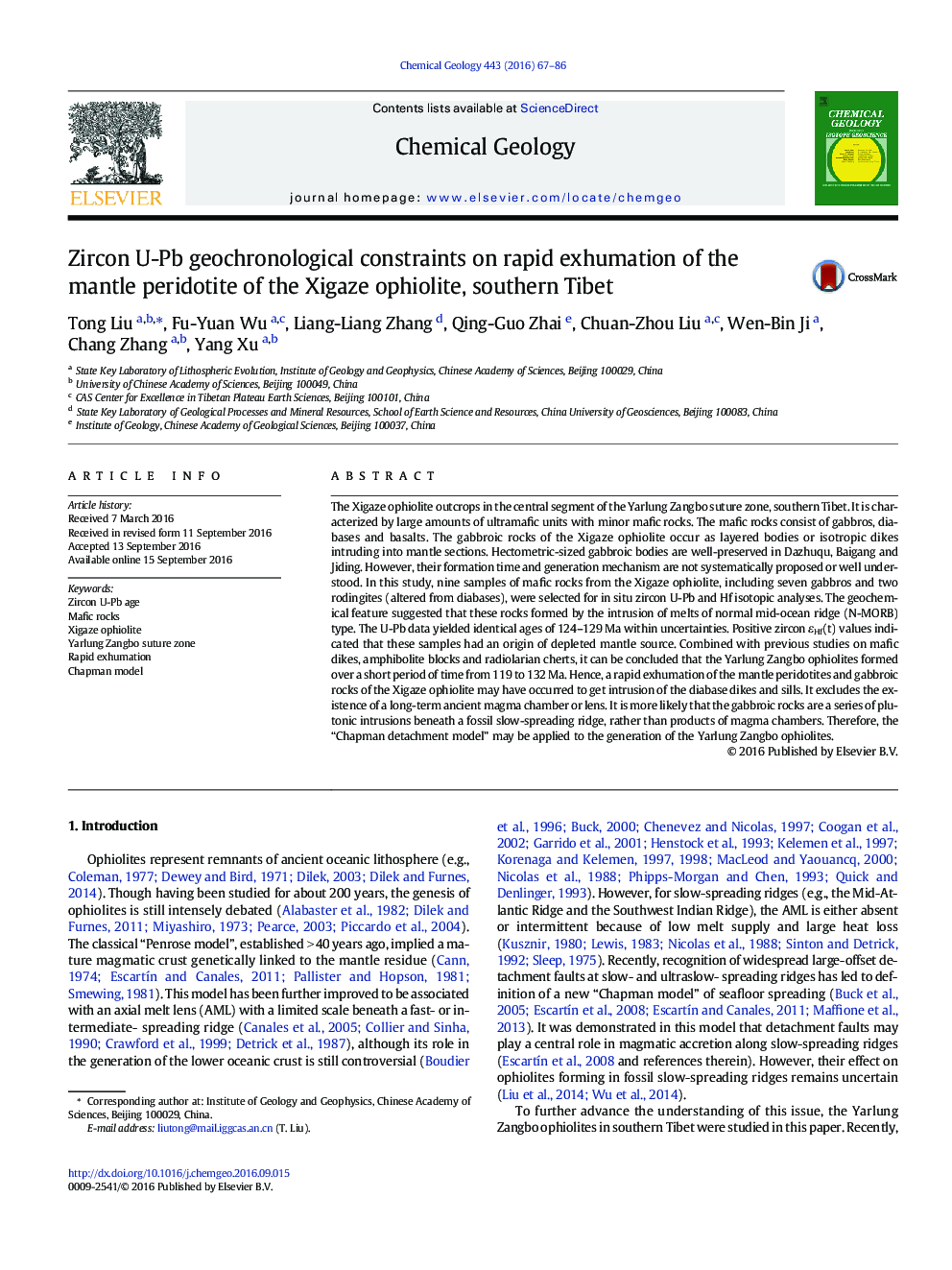| کد مقاله | کد نشریه | سال انتشار | مقاله انگلیسی | نسخه تمام متن |
|---|---|---|---|---|
| 6435983 | 1637531 | 2016 | 20 صفحه PDF | دانلود رایگان |

- A detailed geochronological study of the mafic rocks of the Xigaze ophiolite.
- The mafic rocks of the Xigaze ophiolite were formed during 124-129 Ma.
- A rapid exhumation of the mantle peridotites and gabbroic rocks of the Xigaze ophiolite was identified.
- The gabbroic rocks are a series of plutonic intrusions beneath a fossil slow-spreading ridge.
- The “Chapman detachment model” may be applied to the generation of the Yarlung Zangbo ophiolites.
The Xigaze ophiolite outcrops in the central segment of the Yarlung Zangbo suture zone, southern Tibet. It is characterized by large amounts of ultramafic units with minor mafic rocks. The mafic rocks consist of gabbros, diabases and basalts. The gabbroic rocks of the Xigaze ophiolite occur as layered bodies or isotropic dikes intruding into mantle sections. Hectometric-sized gabbroic bodies are well-preserved in Dazhuqu, Baigang and Jiding. However, their formation time and generation mechanism are not systematically proposed or well understood. In this study, nine samples of mafic rocks from the Xigaze ophiolite, including seven gabbros and two rodingites (altered from diabases), were selected for in situ zircon U-Pb and Hf isotopic analyses. The geochemical feature suggested that these rocks formed by the intrusion of melts of normal mid-ocean ridge (N-MORB) type. The U-Pb data yielded identical ages of 124-129 Ma within uncertainties. Positive zircon εHf(t) values indicated that these samples had an origin of depleted mantle source. Combined with previous studies on mafic dikes, amphibolite blocks and radiolarian cherts, it can be concluded that the Yarlung Zangbo ophiolites formed over a short period of time from 119 to 132 Ma. Hence, a rapid exhumation of the mantle peridotites and gabbroic rocks of the Xigaze ophiolite may have occurred to get intrusion of the diabase dikes and sills. It excludes the existence of a long-term ancient magma chamber or lens. It is more likely that the gabbroic rocks are a series of plutonic intrusions beneath a fossil slow-spreading ridge, rather than products of magma chambers. Therefore, the “Chapman detachment model” may be applied to the generation of the Yarlung Zangbo ophiolites.
Journal: Chemical Geology - Volume 443, 2 December 2016, Pages 67-86